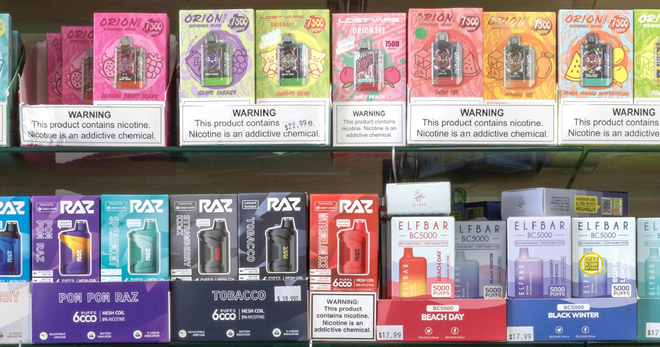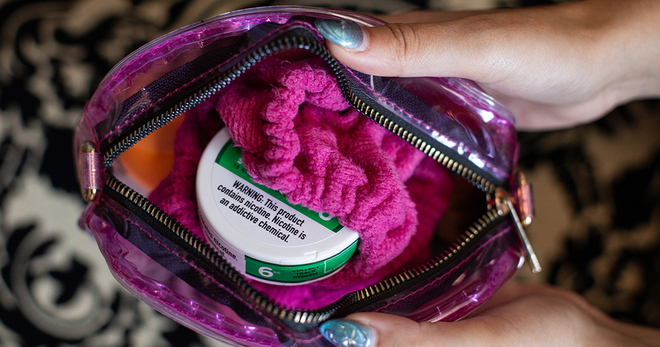Most teachers and administrators can’t identify JUUL, making it hard to combat use in school
Even after the Food and Drug Administration alerted the public to a youth e-cigarette use crisis, fewer than half of teachers and administrators in a recent study could accurately identify a picture of JUUL, the device driving the crisis, making it difficult to confront use in schools.
A new Truth Initiative® study published in Health Promotion Practice shows that, while more than two-thirds (67.6%) of school staff had heard of JUUL, fewer than half (47.3%) accurately identified a photo of the device. Most teachers and administrators (80.3%) reported that school staff were either very or somewhat concerned about e-cigarette use on school property and almost half (49.1%) felt that preventing e-cigarette use was a very or somewhat high priority.
The study surveyed 1,420 middle and high school teachers and administrators from November to December 2018 to examine the awareness of and response to JUUL and e-cigarettes in schools at the start of the youth e-cigarette epidemic. Federal data show e-cigarette use grew 78% among high schoolers and 48% among middle schoolers in just one year from 2017 to 2018 and preliminary 2019 data show that 27.5% of high school students now vape.
The concealability of JUUL confounds enforcement efforts
Can you vape or use JUUL in school?
Most teachers and administrators surveyed reported that their school had a general e-cigarette policy (82.9%), although only 43.4% had a policy that mentions JUUL, by far the most popular e-cigarette at more than three-quarters market ownership.
The design and characteristics of JUUL, which looks like a USB flash drive and produces no strong odor, makes it easy for students to use and disguise the device at school. Teachers and administrators say these discreet features present barriers to enforcing school e-cigarette policies.
Respondents said the three most common barriers were the discreet appearance of the devices (65.6%), difficulty pinpointing where the vapor scent was coming from (46.1%) and that e-cigarettes are addictive (25.8%). Other barriers included the lack of clarity about the policy and how it should be enforced, and lack of support from parents.
Preventing e-cigarette and JUUL use in school environments is important because “research suggests that friends serve as the main source by which adolescents acquire e-cigarettes,” researchers noted. In fact, a 2018 report by the Centers for Disease Control and Prevention and the FDA found that, among middle and high school students who used e-cigarettes in 2016, the top reason was because a friend or family member used them.
“Schools present a critical opportunity to create an environment where youth reject tobacco and e-cigarettes,” researchers wrote, and “school staff are key influencers in the social and ecological environments of young people and have a unique ability to monitor and influence student behavior.”
Another new Truth Initiative study measuring parent awareness of JUUL found that more than one-third of parents — 35.9% — of middle and high school students had no awareness of JUUL.
The growing need for e-cigarette regulation
JUUL and E-cigarette regulations
The findings align with previous research on e-cigarette and JUUL use in school and further underscore the need for stronger regulation and restrictions on e-cigarettes. An April 2018 Truth Initiative survey of more than 1,000 youth aged 12-17 found that almost one-fifth of middle and high school students have seen JUUL used in school.
“Clearly, stronger regulation of e-cigarettes, including JUUL, are needed from the FDA to ensure that e-cigarettes are no longer designed and marketed in ways that appeal to young people, encourage their covert use, and make it difficult for educators to keep them out of school buildings and off school campuses,” the authors concluded.
As use of flavored e-cigarettes like JUUL and its many copycats has skyrocketed, products on the market today are sold in a relatively unregulated environment and have not undergone an FDA review of their public health impact.
The push to increase regulation is intensifying as the U.S. Department of Health and Human Services announced the administration’s intention to remove flavored e-cigarettes from the market and Bloomberg Philanthropies rolled out a $160 Million initiative with the Campaign for Tobacco-Free Kids focused on banning e-cigarette flavors.
While JUUL says they are trying to reach adult smokers who want to switch from combustible tobacco, the company’s youth-oriented marketing tells a different story. Additionally, research from Truth Initiative shows that few adult smokers are using the product and even fewer are using it as a way to quit smoking. Of the 15% of adult tobacco users who have tried JUUL, only about one-third used the product as a way to quit, according to the study published in Tobacco Control.
More in emerging tobacco products
Want support quitting? Join EX Program
By clicking JOIN, you agree to the Terms, Text Message Terms and Privacy Policy.
Msg&Data rates may apply; msgs are automated.


